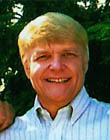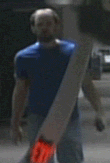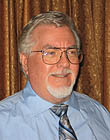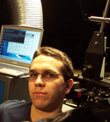|
|
This topic comprises 2 pages: 1 2
|
|
Author
|
Topic: FOCUS, focus and refocus?
|
|
|
|
|
|
|
|
|
|
|
|
|
John Pytlak
Film God

Posts: 9987
From: Rochester, NY 14650-1922
Registered: Jan 2000
|
 posted 09-16-2003 09:31 AM
posted 09-16-2003 09:31 AM





Richard C. Wolfe wrote:
quote:
I'm talking here about from one lab to another, especially for preshow daters etc. All the short items that are spliced together for the preshow. I get my theatre logo and policy announcement from one company and my daters from another one, and I have to refocus almost each and every one. Sometimes various daters that come from the same company even have a slightly different focus.
Many daters, policy announcements, and rolling stock ads are NOT printed on Kodak print film, so there can be variability due to stock differences. I assume they are all on polyester print film at least?
Another problem can be the winding orientation and the way these short lengths of film were wound by the lab. Winding orientation has a significant effect on focus, especially if the film was wound on a small hub or core ("core-set" or clockspringing). I would suggest rewinding the film with the same orientation you normally use on your platters (emulsion out?) and letting the film "relax" and take on the new winding orientation. Do NOT use small hubs or small cores, regardless of the winding orientation.
Relative humidity in the projection room can also affect focus. Ideally, the film should be equilibrated to about 50 to 60 percent relative humidity. Really damp conditions can make the film take on "negative" curl, where the gelatin emulsion swells with the excess moisture. The heat of the projector drives out this moisture, shrinking the emulsion enough to cause a change in focus. Conversely, really dry conditions cause the emulsion to shrink, and may produce excessive "positive" curl.
Certainly the type of gate, gate tension, amount of radiant energy, etc. can affect focus. With your larger lamps, pay attention to proper lamp alignment and focus (good illumination uniformity), and use dichroic heat filters/reflectors:
http://www.kodak.com/US/en/motion/newsletters/pytlak/fall97.shtml
http://www.kodak.com/US/en/motion/newsletters/pytlak/winter97.shtml
| IP: Logged
|
|
Richard C. Wolfe
Master Film Handler

Posts: 250
From: Northampton, PA, USA
Registered: Apr 2000
|
 posted 09-16-2003 03:13 PM
posted 09-16-2003 03:13 PM





OK, here's the situation. First of all I think that some of you misunderstood what I was saying. The problem that I was speaking of is NOT with the feature, just the preshow.
I think that Brad may have hit the problem on the head. I get all my daters... things like: "Prevues of Coming Attractions", "Our Next Attraction", "Starts Friday", "Our Feature Presentation" and many more from Filmack, which of course is photoguarded. I get my theatre logo and policy announcements from Pike Productions. It may be that fact that is causing the problem. Some items with photoguard and some without. However, sometimes several items from the same company are in a different focus. Each of these items run for only a few seconds. The focus doesn't change throughout any singular item, but from item to item. Example: The daters are always spliced together as follows: Theatre Logo, Policy announcement (both from Pike), then Prevues of Coming Attractions, Our Next Attraction, Starts Friday(all from Filmack)then insert trailer, followed by "Remember this Attraction Starts Friday", Our Feature Presentation (both from Filmack), and of course then the Feature. Our focus knob is filed and painted with a line on it so that we can always see where the focus is set, as on a clock. We refer to the focus setting as 5 o'clock, 7 o'clock or whatever. It is not unusual for the "Prevues of coming..." to be at 5 o'clock, the "Our Next Attract.... at 7 o'clock and then back to 4 or 5 for Starts Friday. The trailer and Feature is almost always at 4:30 to 5 o'clock.
John P. may have a good point whereas they may not all be printed on Kodak film. As far as the winding orientation, I don't know if they are stored emulsion in or out, I'll have to check. We store all our daters not being used in a special film cabinet made just for daters. They are NOT stored on cores or hubs, they are hand wound and lie on their side where they can relax. The daters that are usually used always stay on a 6000' reel as they are used from show to show. There is one reel for Flat and another for Scope. The one that isn't being used is stored in a 70mm film cabinet where 2 reels fit in each bin. I just received a new shipment of daters from Filmack and have put all news ones on so dirt or oil buildup isn't a possibility as they are all brand new, yet still different in focus.
I will hereby list all the equipment in our booth, much of it having nothing to do with this problem, but I know many of you like to see what equipment is in a given booth.
We have a two projector changeover system with 6000' reels.
2 Simplex E-7 projectors
2 Simplex IPC 4 Star soundheads (now with Component Engineering ASR40S reverse scan red light readers)
2 ORC 2000 watt lamphouses model # XH-305
2 Eprad Co-operator automation units
LENSES: Scope: 2 Kollmorgen 2X model KA298 with Cinephor E.F. 5 in. f:2.0 backups
Flat: 2 Schneider Cinelux-Ultra 2/70mm-2.75 in.
Makeup table: Kelmar Systems RTV-8200
Splicer: NewTaper from Newmade Products Corps.
SOUND: Dolby CP45 Cinema Processor
Component Engineering MS-100 Booth monitor
Amplifiers: 4 QSC mx 1500 amp
SPEAKERS: Backstage - 3 Altec Voice of the Theatre A4s
Surrounds - JBLs (can't see the model #s)
SCREEN: 15' x 30' Flat picture is 15' x 27'. Scope is 13' x 30'.
The throw from lense to center screen is 90'.
The proscenium arch is 30' wide so the screen fills the entire width. We have movable masking to go from flat to scope. There are also two stage curtains. The 2nd is used for films while the front one is only used for stage shows.
The screen is curved with a 2' depth at the center and is tilted back somewhat toward the angle of projection.
I will have to make an effort to get some pictures to Brad to post. However, meanwhile there is a fairly recent booth photo in our website at www.roxytheaternorthampton.com. Click on the "photo" page and scrawl down to the bottom and click on the brass plate that says Roxy Theatre Past. Then click on the album cover... when it is open, scrawl to the bottom and click on next page and two shots of the booth will appear... one from the days of carbon arc, and one as it appears now.
If the information posted above gives anyone any more ideas as to the solution for my problem, I'll look forward to read them.
[ 09-16-2003, 09:46 PM: Message edited by: Richard C. Wolfe ]
| IP: Logged
|
|
|
|
|
|
|
|
John Pytlak
Film God

Posts: 9987
From: Rochester, NY 14650-1922
Registered: Jan 2000
|
 posted 09-17-2003 09:15 AM
posted 09-17-2003 09:15 AM





On a platter, wind with whatever orientation gives you the best performance for focus stability and minimum static cling. Since the curl of the film varies with the relative humidity, the preferred winding orientation may vary with humidity.
SMPTE Recommended Practice RP39, which specifies maintaining an emulsion-in winding orientation for optimum focus stability, was based on Kodak data for projection performance of TRIACETATE prints, which had different curl characteristics than polyester prints:
"Effect of Winding on the Projection Performance of 35mm Motion Picture Film" by Paul H. Preo and Eric A. Yavitz, SMPTE Journal, June 1965, Volume 74, Pages 521-525.
The recommendation to wind on the largest possible core or reel hub diameter IS still valid, regardless of whether the film is triacetate or polyester base. Fortunately, the inside diameter of the film roll on a platter is much larger than any reel or core, so core-set focus issues usually are due to small-diameter winding before the film ever gets on the platter.
| IP: Logged
|
|
|
|
|
|
|
|
|
|
All times are Central (GMT -6:00)
|
This topic comprises 2 pages: 1 2
|
Powered by Infopop Corporation
UBB.classicTM
6.3.1.2
The Film-Tech Forums are designed for various members related to the cinema industry to express their opinions, viewpoints and testimonials on various products, services and events based upon speculation, personal knowledge and factual information through use, therefore all views represented here allow no liability upon the publishers of this web site and the owners of said views assume no liability for any ill will resulting from these postings. The posts made here are for educational as well as entertainment purposes and as such anyone viewing this portion of the website must accept these views as statements of the author of that opinion
and agrees to release the authors from any and all liability.
|

 Home
Home
 Products
Products
 Store
Store
 Forum
Forum
 Warehouse
Warehouse
 Contact Us
Contact Us




 Printer-friendly view of this topic
Printer-friendly view of this topic








![[Wink]](wink.gif)







